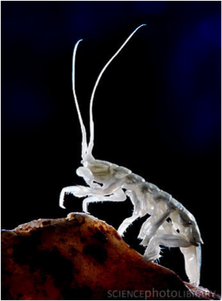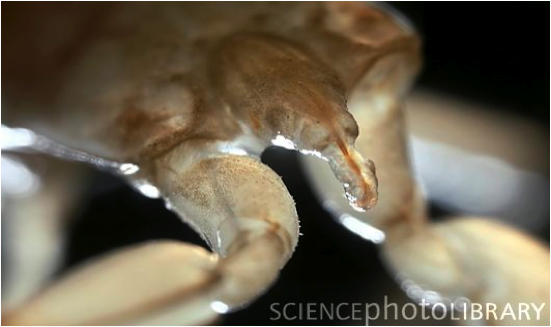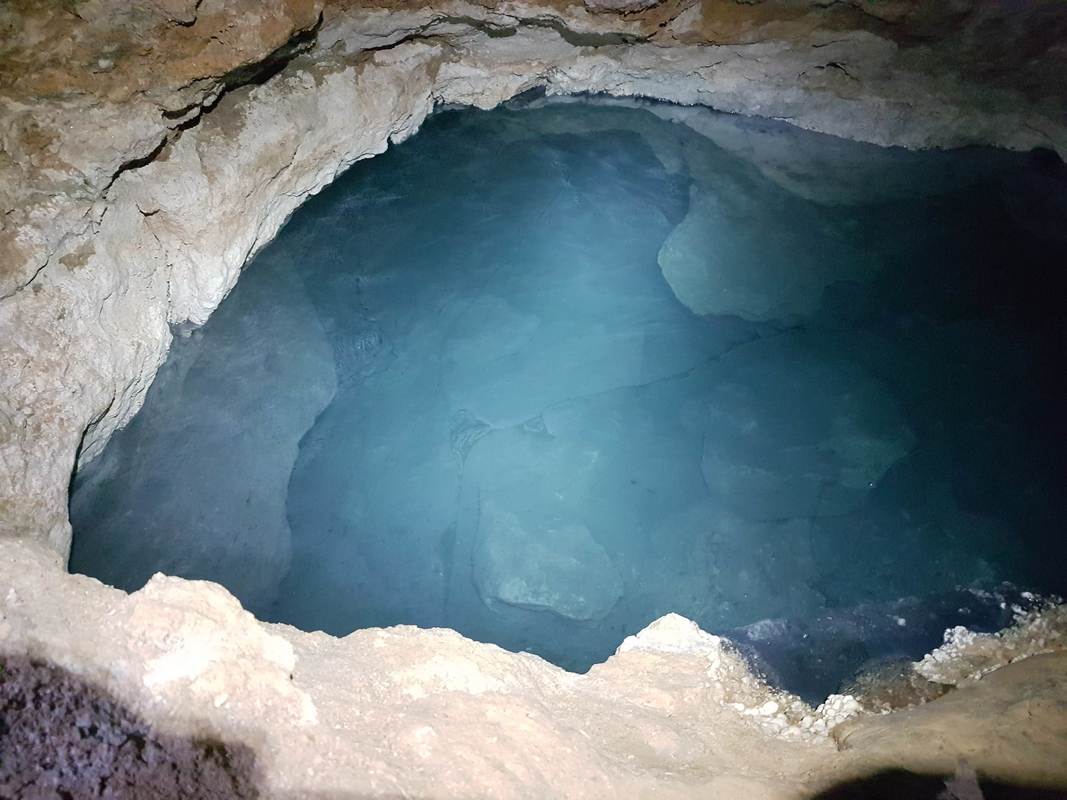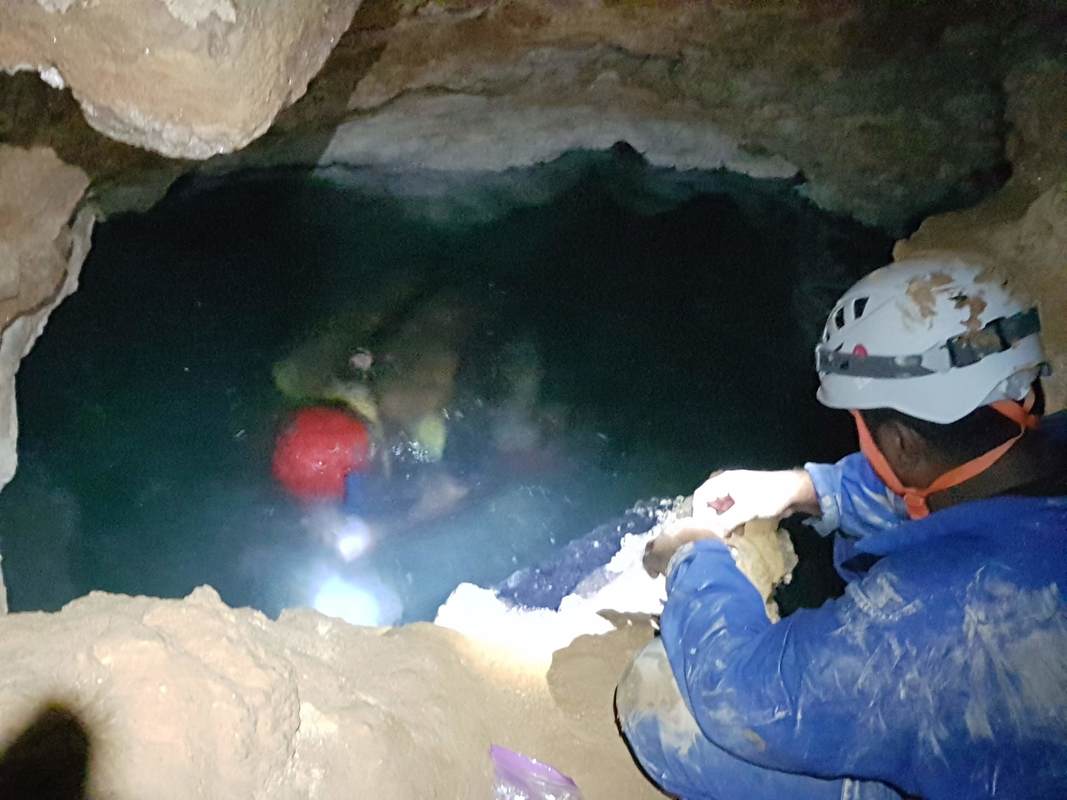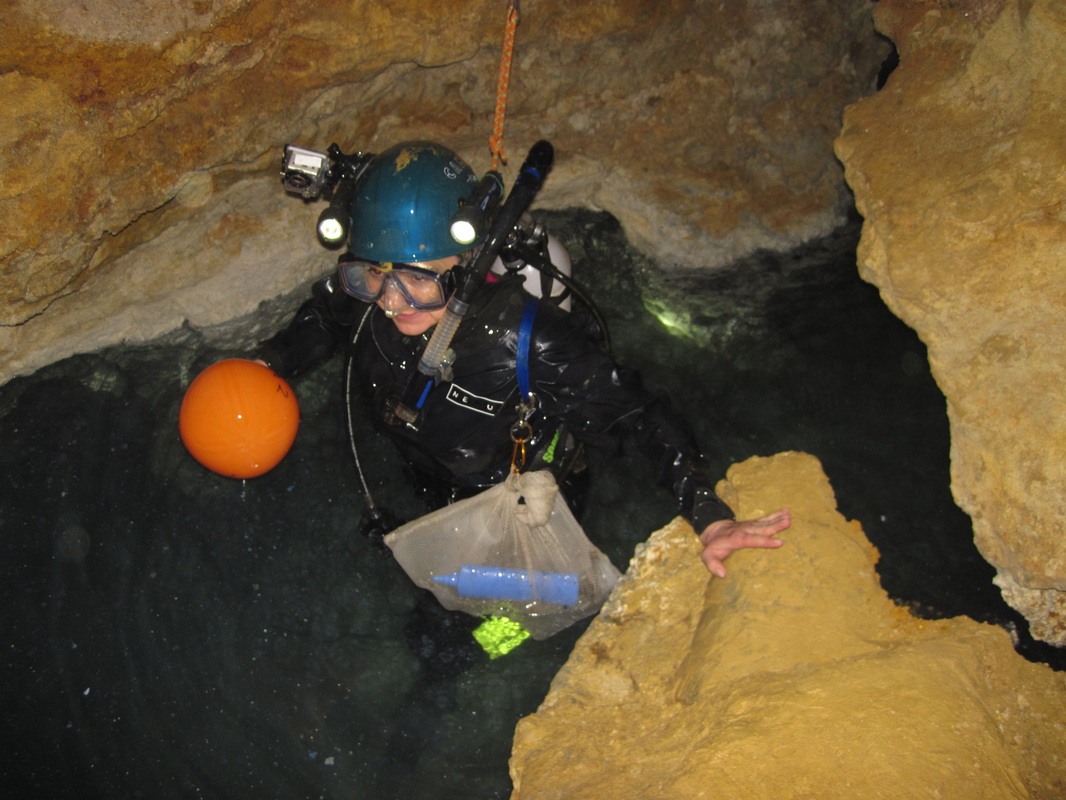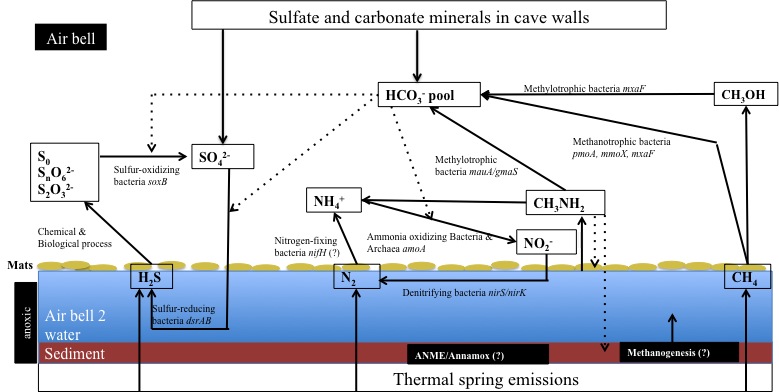Movile cave microbiology
Discovered in 1986, by geologist Christian Lascu, Movile Cave is an unique cave ecosystem where life is sustained by in situ chemosynthetic primary production (analogous to deep-sea hydrothermal vents). Movile Cave is completely isolated from the surface and the primary energy sources are hydrogen sulfide and methane released from thermal fluids seeping into the cave. Invertebrates, many of which are endemic to Movile Cave, are isotopically lighter in both carbon and nitrogen than surface organisms, indicating that they derive nutrition from microbial primary producers within the cave. They are adapted to life in the dark and lack pigmentation. Aerobic methylotrophs play an integral role in carbon cycling within the environment. Using various eco-genomic tools, this project investigates the functional diversity of methylotrophs within the cave ecosystem (floating mats and sediments) and understand the physiology of methylotrophs that have been isolated from this environment.
Lab member: Alexander Allenby (NERC DTP Student) Collaborator
Dr Alexandra Hillebrand-Voiculescu, Emil Racovita Institute of Speleology, Romania |
Relevant publications
Kumaresan D, Stephenson J, Doxey AC, Bandukwala H, Hillebrand-Voiculescu A, Brooks E, Whiteley AS & Murrell JC (2018). Aerobic proteobacterial methylotrophs in Movile Cave: genomic and metagenomic analyses. Microbiome 6:1
Stephenson J, Kumaresan D, Hillebrand A, Brooks E, Whitley AS & Murrell JC (2017). Draft genome sequence of the methane oxidising bacterium “Candidatus Methylomonas sp. LWB” isolated from Movile Cave Genome Announcements 5(3) e01491-16.
Kumaresan D,Wischer D, Hillebrand A & Murrell JC (2015). Draft genome sequences of facultative methylotrophs, Gemmobacter sp LW1 and Mesorhizoium sp 1M-11 isolated from Movile Cave, Romania. Genome Announcements 3(6):e01266-15.
Kumaresan D, Hillebrand A, Stephenson J, Wischer D, Chen Y & Murrell JC (2015) Microbial life in unusual cave ecosystems sustained by chemosynthetic primary production. In Microbial life in cave ecosystems Edited by Annette Summers Engel In press
Wischer D, Kumaresan D, Johnston A, Khawand M, Stephenson J, Hillebrand A, Chen Y & Murrell JC (2015). Bacterial metabolism of methylated amines and identification of novel methylotrophs in Movile Cave. ISME J 9:195-206
Kumaresan D, Wischer D, Stephenson J, Hillebrand A & Murrell JC (2014) Microbiology of Movile Cave – a chemolithoautotrophic ecosystem Geomicrobiol J 31(3): 186-193
Chen Y, Wu L, Boden R, Hillebrand A, Kumaresan D, Moussard H, Baciu M, Lu Y & Murrell J C (2009) Life without light: Microbial diversity and evidence of sulfur- and ammonium-based chemolithotrophy in Movile Cave. ISME J 3(9):1093-1104
Kumaresan D, Stephenson J, Doxey AC, Bandukwala H, Hillebrand-Voiculescu A, Brooks E, Whiteley AS & Murrell JC (2018). Aerobic proteobacterial methylotrophs in Movile Cave: genomic and metagenomic analyses. Microbiome 6:1
Stephenson J, Kumaresan D, Hillebrand A, Brooks E, Whitley AS & Murrell JC (2017). Draft genome sequence of the methane oxidising bacterium “Candidatus Methylomonas sp. LWB” isolated from Movile Cave Genome Announcements 5(3) e01491-16.
Kumaresan D,Wischer D, Hillebrand A & Murrell JC (2015). Draft genome sequences of facultative methylotrophs, Gemmobacter sp LW1 and Mesorhizoium sp 1M-11 isolated from Movile Cave, Romania. Genome Announcements 3(6):e01266-15.
Kumaresan D, Hillebrand A, Stephenson J, Wischer D, Chen Y & Murrell JC (2015) Microbial life in unusual cave ecosystems sustained by chemosynthetic primary production. In Microbial life in cave ecosystems Edited by Annette Summers Engel In press
Wischer D, Kumaresan D, Johnston A, Khawand M, Stephenson J, Hillebrand A, Chen Y & Murrell JC (2015). Bacterial metabolism of methylated amines and identification of novel methylotrophs in Movile Cave. ISME J 9:195-206
Kumaresan D, Wischer D, Stephenson J, Hillebrand A & Murrell JC (2014) Microbiology of Movile Cave – a chemolithoautotrophic ecosystem Geomicrobiol J 31(3): 186-193
Chen Y, Wu L, Boden R, Hillebrand A, Kumaresan D, Moussard H, Baciu M, Lu Y & Murrell J C (2009) Life without light: Microbial diversity and evidence of sulfur- and ammonium-based chemolithotrophy in Movile Cave. ISME J 3(9):1093-1104
